2023 Honda CRF300L Oil and Filter Change (Road and Trail guide) - Page 2
Also applicable to the Honda CRF300L Rally, CBR300R, CB300R, Rebel 300, CRF250L
Previous
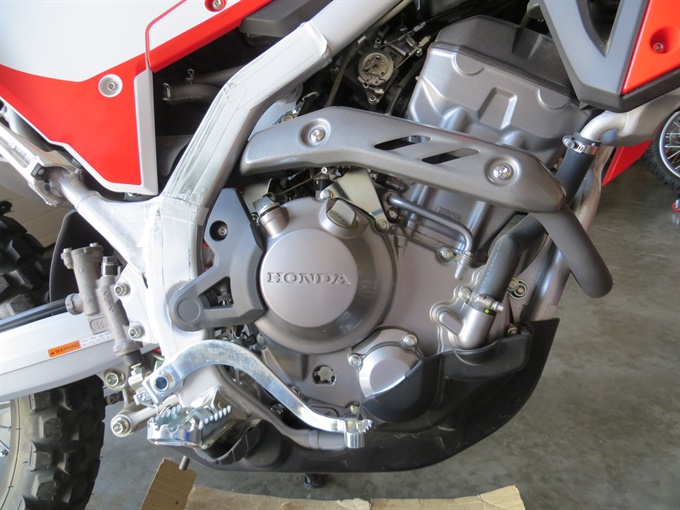
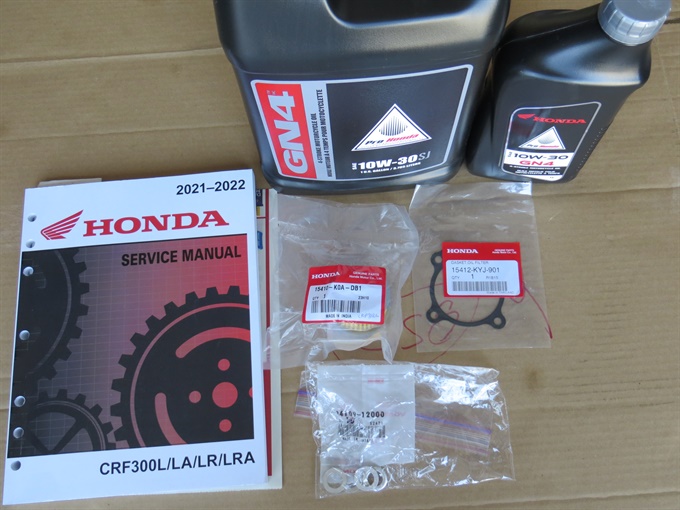
If the motorcycle is really dirty, I recommend that you wash it first, or at the very least, clean around the engine oil drain bolt, oil filler cap and oil filter cover (small cover on right side of engine next to the oil level sight glass) first. If there is dirt on the exhaust and other parts above the oil filler cap, clean those areas too. Also clean the engine case above the oil filter cover.
1. Gather your tools, parts and supplies.
2. Run the bike for a few minutes or so to warm the oil and resuspend any sediment, then turn it off. Be careful not to touch the exhaust when it's hot.
3. Get prepared. Spread newspaper or cardboard under the bike. Put on a pair of disposable gloves (used engine oil is toxic, so try to avoid skin contact). Place a drain pan or pail below the oil drain bolt.
4. Loosen the engine oil drain bolt (underside of engine) with a 12 mm socket and a ratchet or flex-bar.
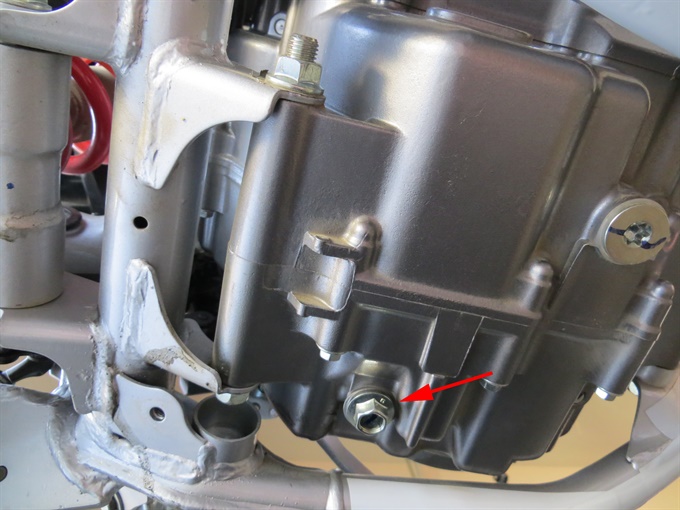
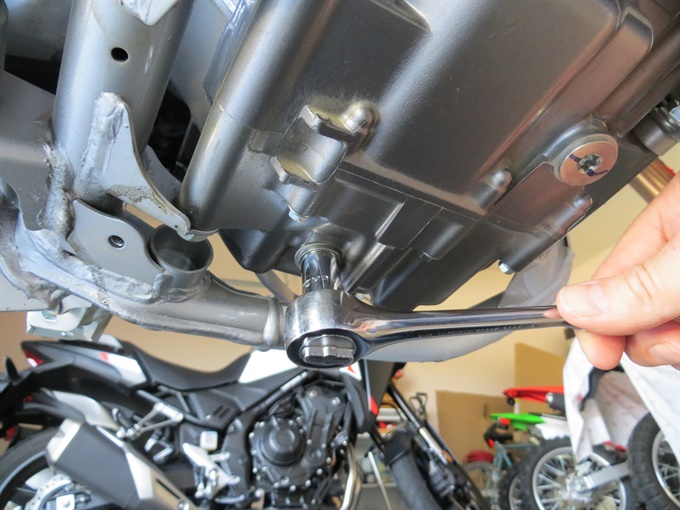
5. Remove the engine oil drain bolt and let the oil drain into the pan or pail. When you're unscrewing the drain bolt by hand, put a bit of upwards pressure on it. When you feel that it's completely unscrewed, quickly pull it down and to the side to try to avoid too much oil spilling onto your gloved hand. It’s easy to drop the oil drain bolt when removing it. Sometimes the sealing washer sticks to the engine case; be sure you remove the sealing washer too; you can use a small flat-bladed screwdriver to loosen the sealing washer after unscrewing the drain bolt a bit or after completely removing the bolt. When the oil has almost stopped draining, tip the bike from side to side a bit to drain more of the oil.
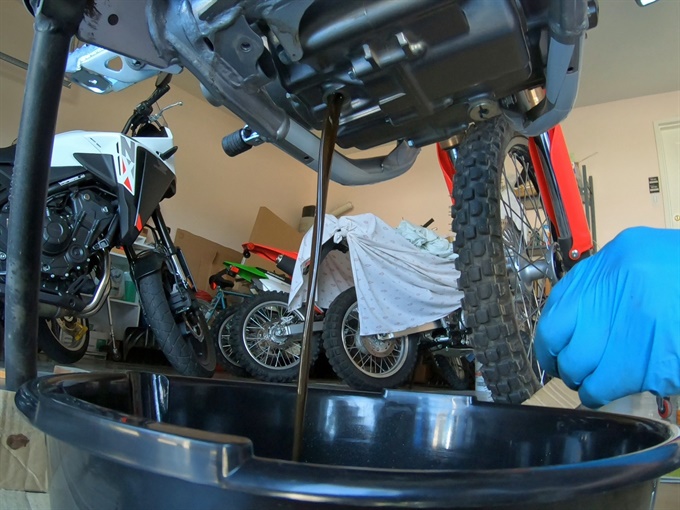
6. Remove the oil filler cap. Ensure that the O-ring is in good condition, otherwise you'll need to replace it. Clean the O-ring and the seating surface (underside) of the cap. Clean around the opening of the oil filler hole, but be careful not to let dirt fall into the opening.
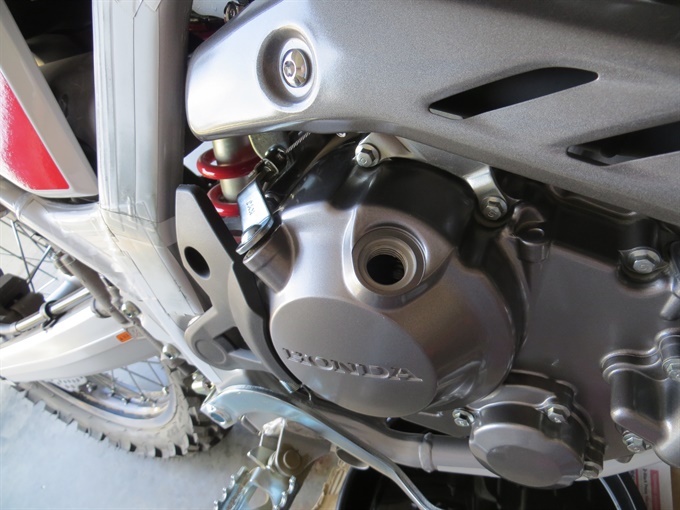
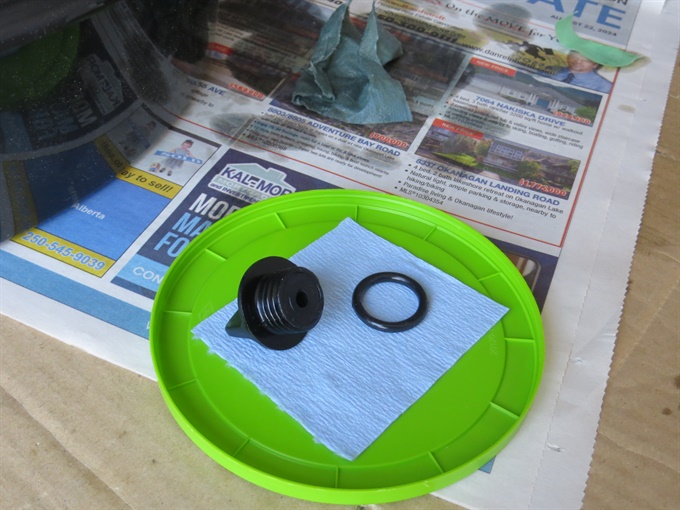
If you're going to change the oil filter too, you can proceed with that now, or you can reinstall the oil drain bolt first if it looks like the oil has finished draining. Instructions follow.
7. Clean the oil drain bolt (and the sealing washer if reusing it). If using a magnetic drain plug, be sure to clean off the magnet. Clean off the seating surface around the oil drain hole. The service manuals state to use a new sealing washer. I've reused some flat aluminum sealing washers over the years (after inspecting them to verify that they were still in good condition) without any issues. I always use a torque wrench when tightening an oil drain bolt. You'll have to make your own decision about reusing the sealing washer. Some people say to always use a new sealing washer. If in doubt, use a new one, or play it safe and always use a new one. If you buy OEM sealing washers individually from a dealer, it will likely cost you quite a bit more than buying them in larger quantities from another source. I chose to replace the sealing washer because it looked a little bit deformed.
Apply engine oil to the oil drain bolt threads and seating surface (likely there will be oil on the threads and seating surface of the drain hole). Reinstall the oil drain bolt with a sealing washer. Insert the drain bolt and tighten by hand (it should thread-in easy). Use an accurate torque wrench to tighten it to a maximum torque of 24 N.m (18 lbf.ft). If you're using a beam-type torque wrench with markings on one side only, you can use a mirror resting on a small box or blocks of wood so that you can see the markings on the torque wrench. The mirror should be directly underneath the torque scale, and you should be looking at it straight-on. This is not an issue with click-type torque wrenches.
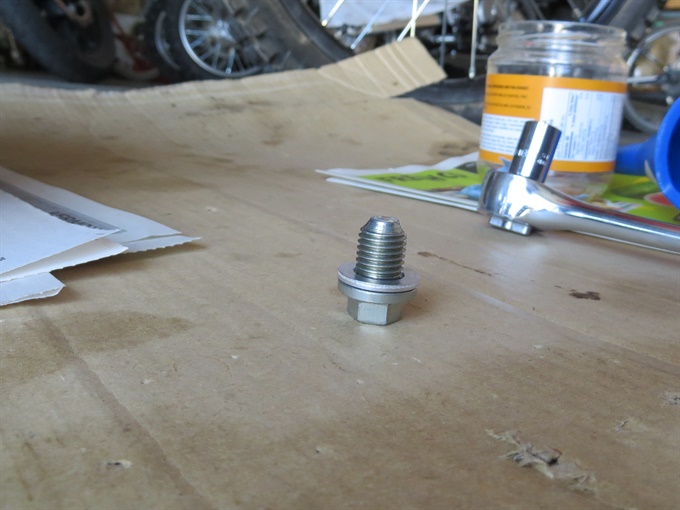
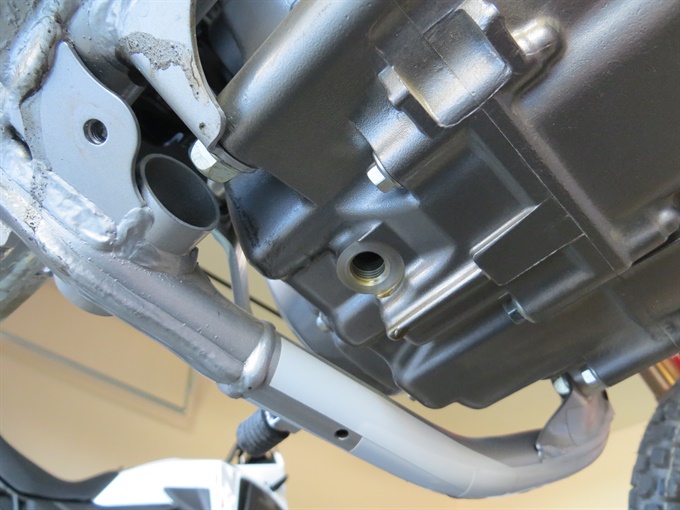
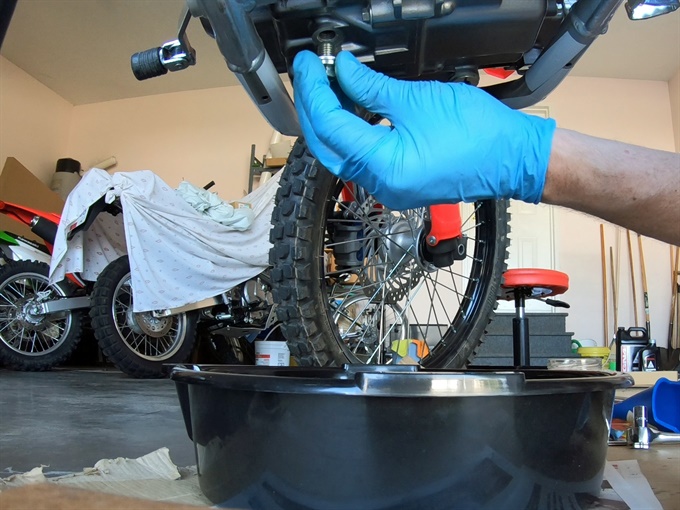
8. To change the oil filter, loosen and then remove the 4 bolts securing the oil filter cover. Some oil may dribble out (and make a mess), so I tape some paper to the engine cover below the oil filter cover to redirect the oil into the drain pan. There is a spring between the oil filter cover and the oil filter. The spring may be held in place by the oil filter cover, but it may fall out. There is also a fiber gasket between the oil filter cover and the crankcase cover.
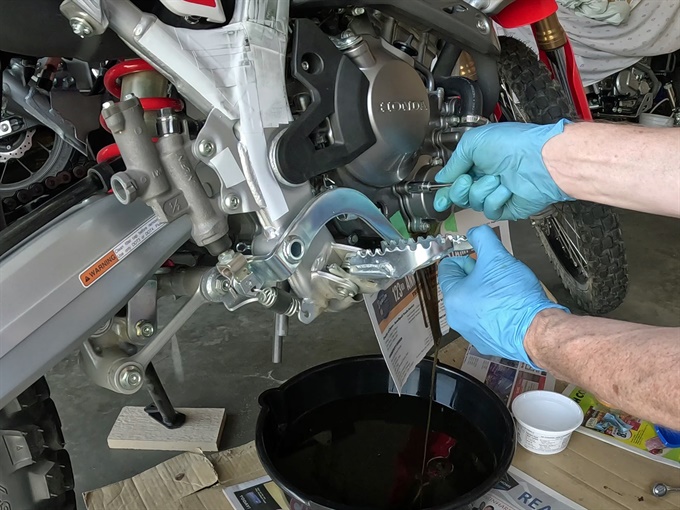
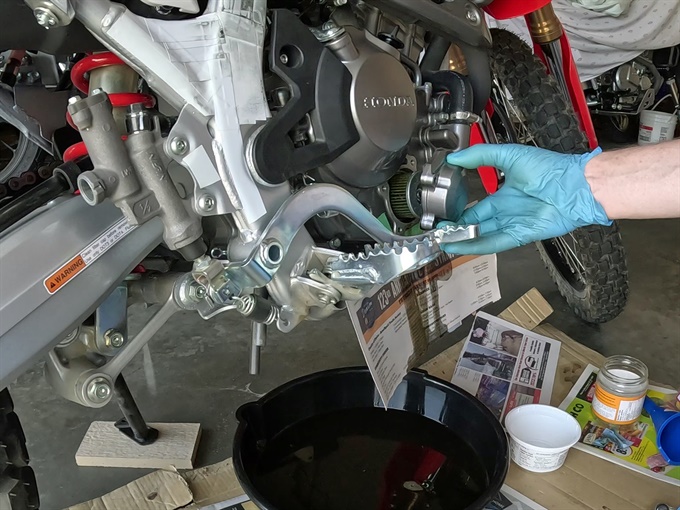
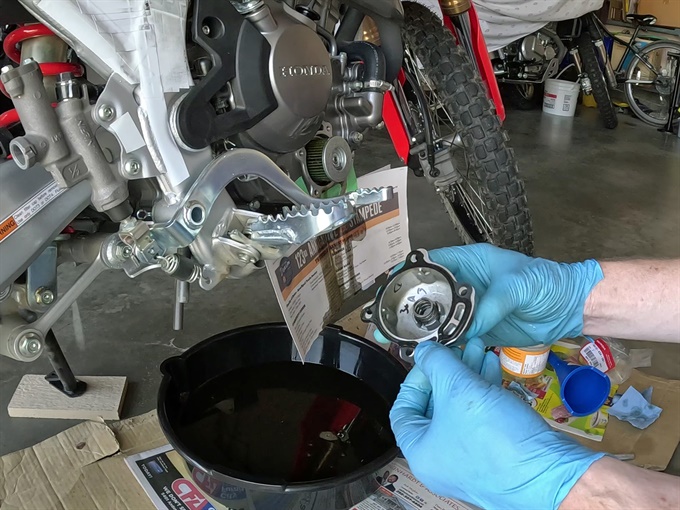
9. Remove the oil filter and inspect it for excessive metal particles and other debris. If you're using an oil filter magnet, remove it from the old filter and clean it. On some of our bikes we use magnetic drain plugs or an oil filter magnet.
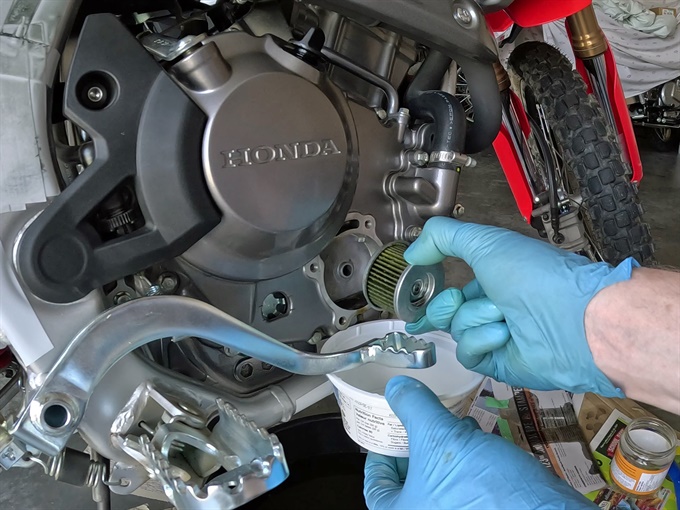
10. Clean the sealing surfaces of the oil filter cover and the crankcase cover (remove any gasket material). Clean out any debris/sediment from where the oil filter resides. Clean the oil filter cover bolts and the bolt holes if oil seeped in. Generally, torque specs apply to clean, dry threads unless otherwise stated.
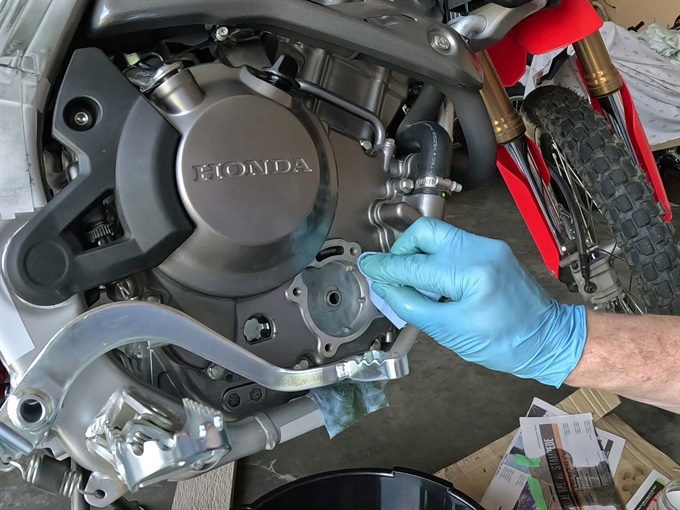
11. Inspect the gasket. If the gasket is not damaged, you can likely reuse it, otherwise use a new gasket. The service manual states to use a new gasket.
If you have not already done so, reinstall the oil drain bolt (see above).
12. Install the new oil filter. I choose to pour clean motorcycle oil into the new oil filter to prime it somewhat; some people say not to do this because the oil has not been filtered. I would think that new oil right out of the bottle is likely cleaner than it will ever be, but you decide. Coat the rubber seal on the oil filter with clean oil so it slips over the inner protrusion in the crankcase cover. Install the new oil filter with the “OUT-SIDE” mark facing outwards. This is critical. If you put it in backwards, you can ruin your engine. The OEM Honda oil filter I received did not have the word "OUT-SIDE" stamped on it. The side of the filter with the hole and rubber seal faces inwards. If you poured oil into the oil filter, some of that oil may dribble out if you're not quick at installing the filter.
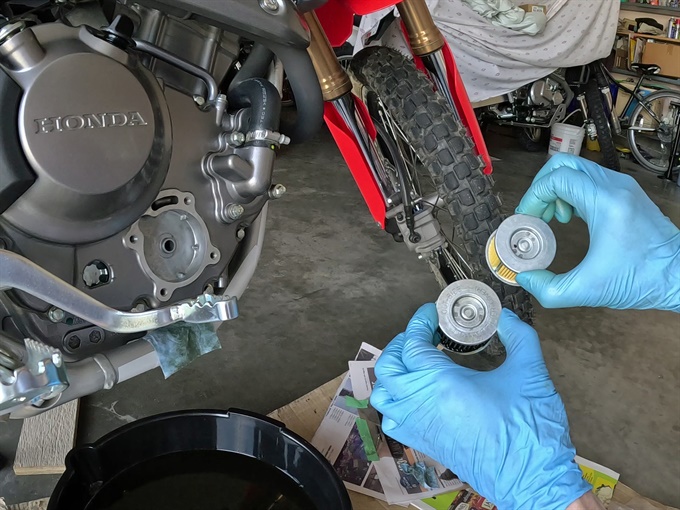
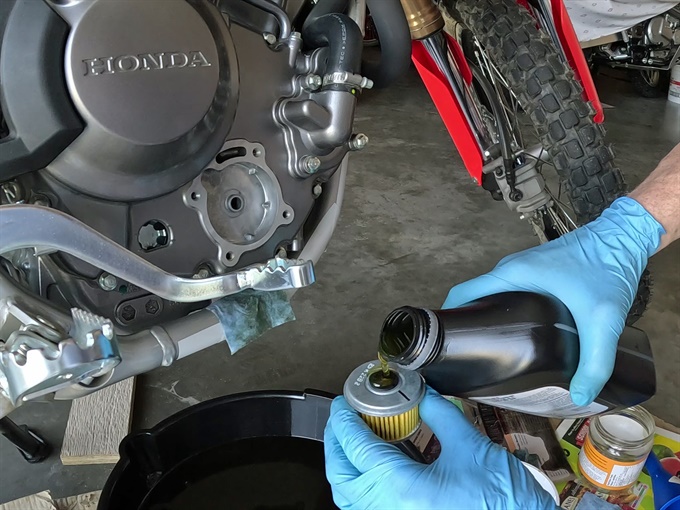
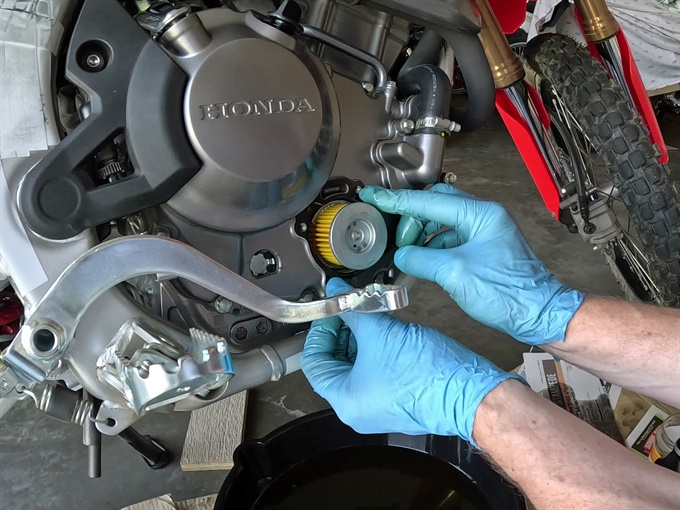
13. Install the oil filter cover, spring and gasket. You can install the gasket, oil filter cover and the spring all in one go. Install the gasket between oil filter cover and engine cover in the correct position; it should be obvious which way it goes. Install the spring in the oil filter cover. There are “prongs” on the inside of the oil filter cover that help hold the spring in position, but the spring may slip out of position. If you're having difficulty, try installing the oil filter with the oil filter cover, spring and gasket all together (make sure oil filter is positioned correctly with the rubber seal facing inwards and on the inner protrusion).
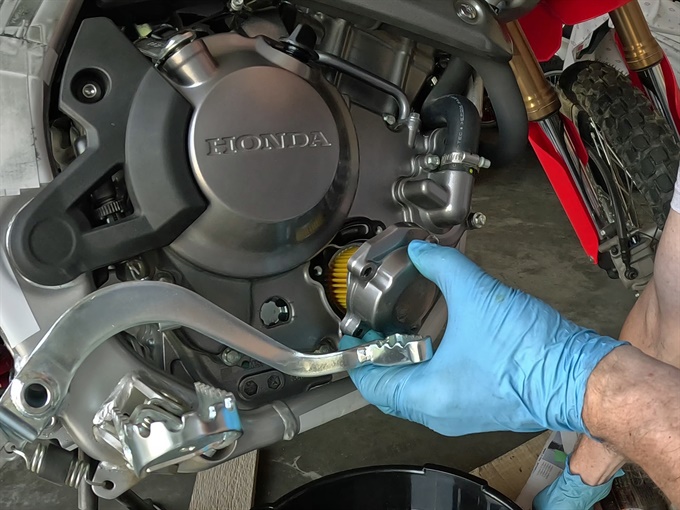
Insert and hand-tighten (snug up) the oil filter cover bolts, and then in a diagonal pattern, torque them to a maximum of 12 N.m (9 lbf.ft). I do this in stages: torque them all about half way, then all to the final torque (keep reading). Do not over-tighten. This torque spec is from the 2012 CBR250RA owner's manual. The CRF300L factory service manual specifies this same torque value for a 6 mm flange bolt (8 mm head, large flange) and nut. If the threads of the bolts or holes have oil on them, and you torque to spec, you risk over-torquing the bolts. As a precaution, I under-torque the cover bolts a bit (at 10 N.m).
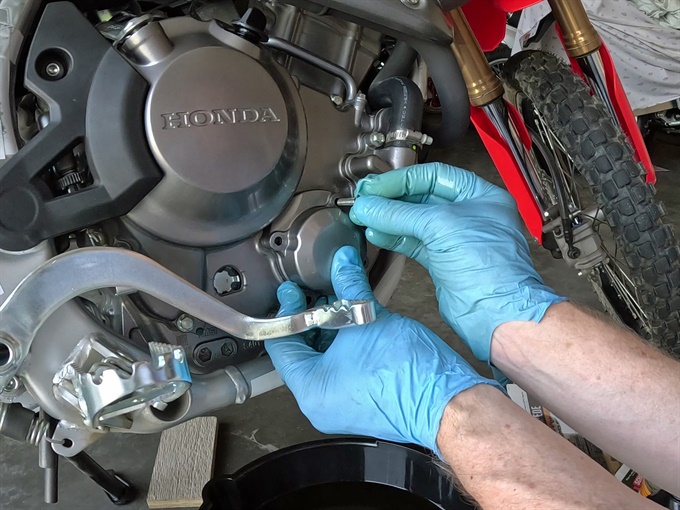
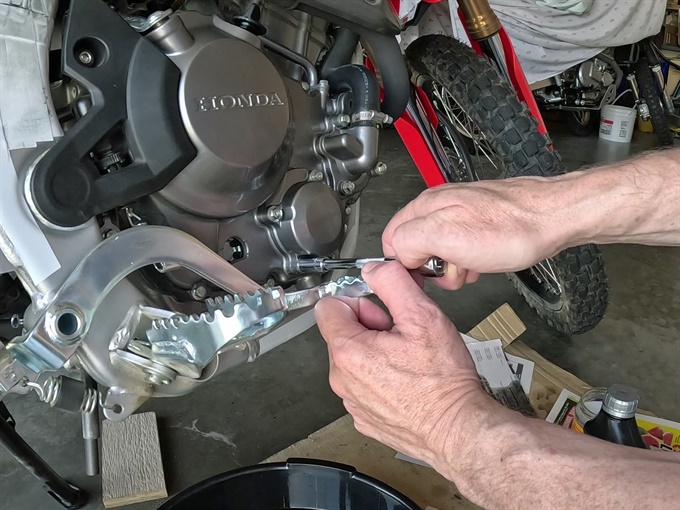
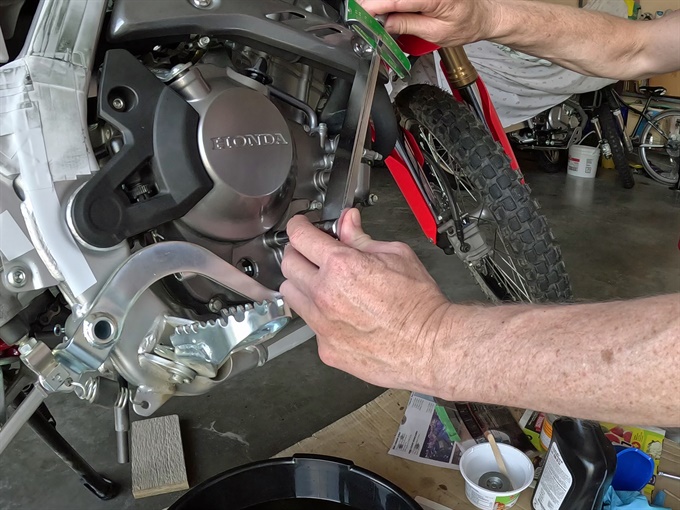
If you haven't already cleaned the oil filler opening, do so now.
14. Pour the recommended amount and type of new motorcycle engine oil into the oil filler hole (you may want to use a clean funnel), and watch the level in the oil level window (sight glass) as you do so. For the oil level in the sight glass to be accurate, the bike must be completely upright (vertical) and on level (horizontal) ground. You can have someone hold the bike vertical, use a bike stand, or repeatedly add some oil and then stand the bike up and check the level. You can also place a wood block under the side stand so the bike is almost vertical and then add oil until it maybe reaches the low-level mark (depends on how close to vertical the bike is) and then stand the bike up to verify the oil level. The level in the sight glass should be between the upper and lower marks and close to or at the upper mark. Do not overfill. If you do overfill, you can carefully drain some oil out through the oil drain hole. Provided that you have replaced the oil filter, the oil level tends to drop a bit after running the engine due in part to the filling of the oil filter cavity. So, if the oil level is a bit above the full mark before running the engine, you may be fine.
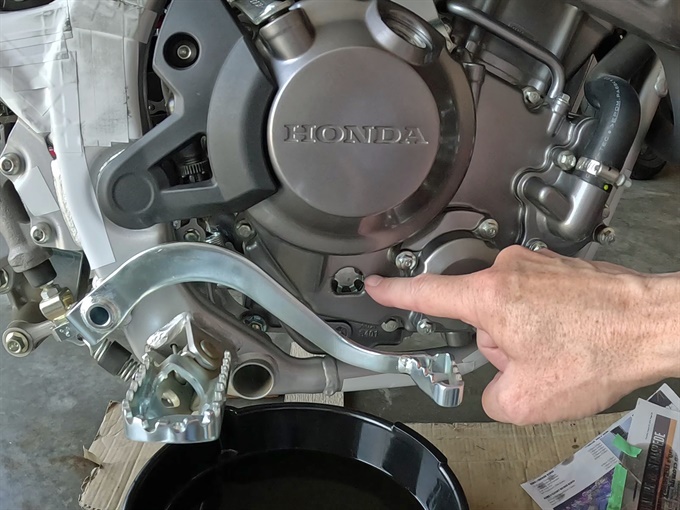
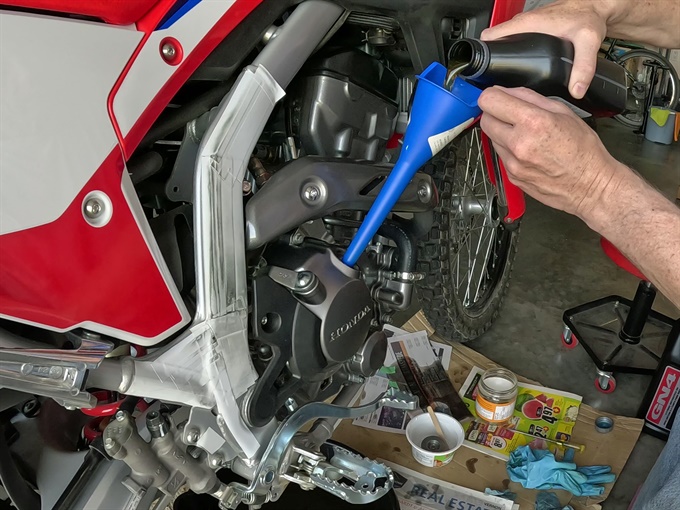
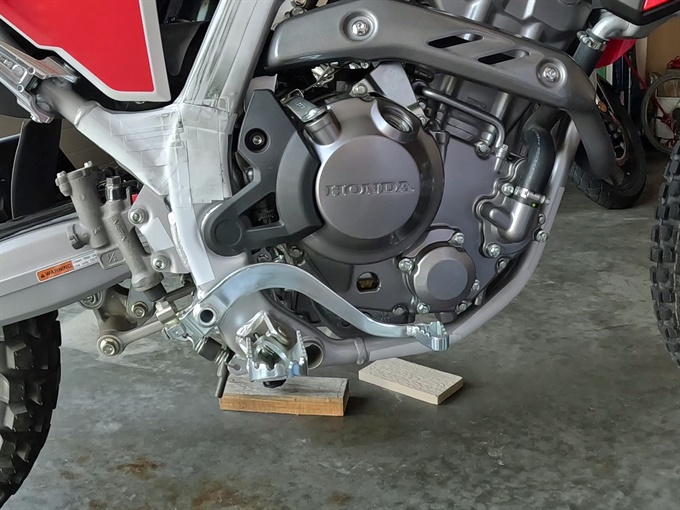
A too high oil level may affect the overall engine performance and actuation of the clutch (according to the Honda Common Service Manual). Also, if the oil level is too high the oil can become aerated (air bubbles in it) which could impact the engine lubrication system. If the oil level is too low, premature engine wear and overheating may result.
15. Reinstall the oil filler cap (apply oil to the O-ring).
16. Do the oil level check and check for leaks. With the motorcycle resting on the side stand on level (horizontal) ground, start the engine and let it idle for about 15 seconds and then turn it off. Wait for about 3 minutes. With the bike held upright (vertical) on level (horizontal) ground, check the oil level window. The oil level should be between the upper and lower marks. If the oil level is low, remove the oil filler cap and add oil up to the upper oil level mark. Do not overfill. Reinstall the oil filler cap if removed. Now start the engine again and let it idle for about 3 minutes and then shut it off. Wait about 3 minutes and check the oil level again. Add oil to the upper oil level mark if low (again, do not overfill).
17. Clean up. Dispose of the used engine oil and oil filters in a responsible way (recycling depot or some automotive service centres).
All done!
Previous